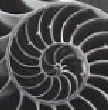
Problems for
Intermediate Methods in Theoretical Physics
Edward F. Redish
 |
Problems for |
Solution
For simplicity's sake, I will model the physics building as a rectangular solid. Looking at the front and sides of the building, and using as my reference that fact that one of my steps is about 3 ft, I estimate width = 120 ft, length = 350 ft, height = 100 ft (counting the basement...those walls are brick too). This gives a lateral surface area of 2LH + 2WH = 94,000 ft 2. The walls are probably about 1 ft. thick, so the outer shell of the building has a volume of about 94,000 ft 2.
However, it looks as if the walls that divide the rooms inside the building are also largely made out of brick. Rooms are different sizes on different floors, but it seems like you'd get a continous length of wall about 6 times the length of the building if you could somehow straighten out all the dividing walls on a floor. After all, just putting the two sides of the main hallway down the middle of the ground floor requires a length of wall of twice the building's length. Since this imaginary straightened inner wall needs to take care of all the stories of the building, we have a wall that's 6*L long and H high. Assuming the inner walls are also 1 ft thick gives all this inner walling a volume of 6LH*(1 ft) = 210,000 ft3. All together, you'll need enough bricks to fill a volume of about 300,000 ft3 to build the replica building.
The issue of how big a single brick is becomes a little complicated since there are some smaller red bricks on the outer walls, and most of the inner walls seem to be larger cinder blocks. I will split the difference and estimate the typical brick to be 1 ft long by 1/3 ft wide by 1/3 ft high. That makes one brick's volume about 1/10 of a cubic foot, so my estimate is that you'll need about 3 million bricks to build the replica building.
(Solution by T. Bing)
| University of Maryland | Physics Department | Physics 374 Home |
|---|---|---|
 |
 |
 |
Last revision 28. September, 2004.